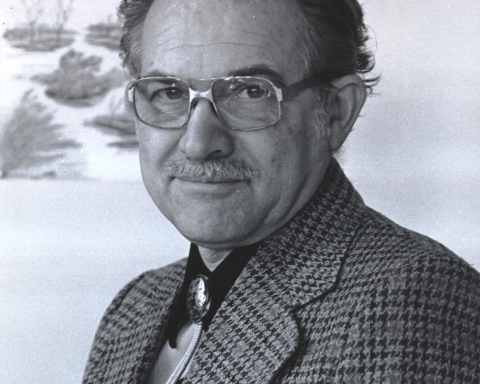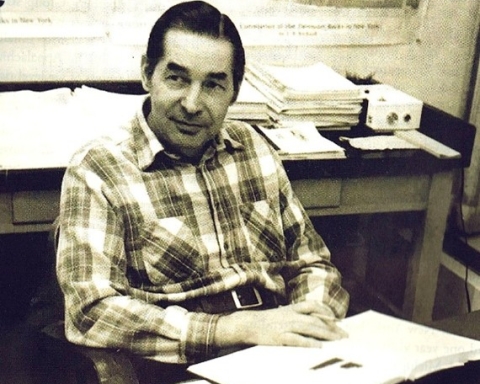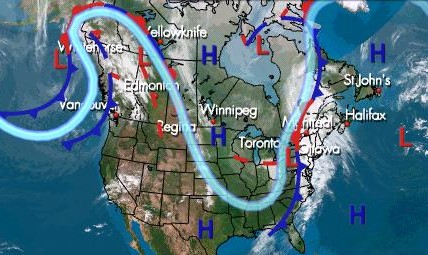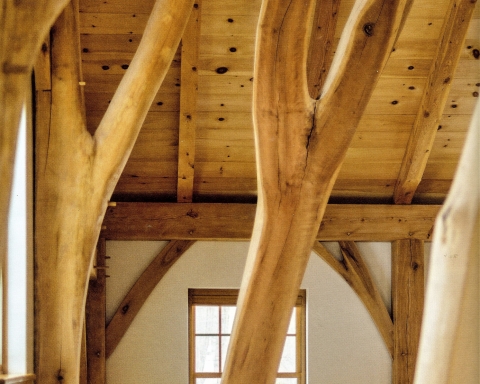Something called planar cross beds
The Catskill Geologists; May 18, 2018
Robert and Johanna Titus
We would like to get you to take closer looks at the rocks you find yourself passing by. We do it all the time. When we are out driving, we pass outcrops along the sides of the roads. It takes a very well-trained eye to see anything at 55 miles per hour, but it can be done. If you are like so many of us, then you will find yourself out hiking in the Catskills. That’s when we want to help train your eyes to see what has always been there, right in front of you. Let’s do some of that today.
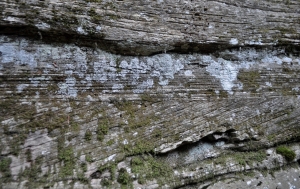
Take a look at our photo; it’s a close-up view of some very typical Catskill strata that we took in the western Catskills. It’s something you might see almost anywhere in our mountains. Notice the structure of the strata. There is an obvious horizontal line running across the photo, starting about halfway up. The strata above that line are all horizontal while those in the lower half are sharply inclined. What is going on here?
We always draw a parallel between what we see in the rocks and what we see on roadside signs in a foreign country. Perhaps you have driven through Quebec and have seen signs written in French. Unless you know French you can’t tell what the sign is trying to say. It’s much the same with the strata of sedimentary rocks. The strata in our photo seem to be trying to speak to you, but you have to be able to read rocks in order to find out what they might be saying.
It must be obvious that the strata in the lower half of our photo are telling a different story from those above them. Indeed they are. We need an English/Rock dictionary, don’t we? On one page would be a photo and on the opposite page would be its translation into English. Well, they don’t publish English/Rock dictionaries so we will just have to get along without one. Let’s give it a try.
The strata on the lower half of this photo display what is called planar cross bedding. Each stratum is inclined to the left and all of them are piled up on top of each other. This records a day in the history of the old Devonian age Catskill Delta. We are at the bottom of a stream that flowed across the delta, perhaps 385 million years ago. There had recently been some sort of a flood event and fast flowing water currents had been carrying a lot of sediment. But that flood event was coming to an end and the currents were slowing down. They were losing speed and losing their ability to transport sediment.
That sediment, most of it being sand, was dropping to the river bottom and forming a dune of sorts. More currents, carrying more sand, rose up over the “dune” and deposited sediment in the form of those left sloping strata. Each represented a moment of deposition. That moment was followed by another and then still another until the whole sequence came be as you see it.
There was a momentary return of high speed flow and that eroded the horizontal line which you will see, cutting across all of the planar cross beds. Normal stream conditions then returned and all of those horizontal strata came to be laid down to complete the sequence. Millions of year passed and those sands hardened, petrifying into sandstone. Then hundreds of millions of years passed and the sequence was exposed by processes of erosion and photographed by us.
Keep an eye out and you too will see things like this
Contact the authors at randjtitus@prodigy.net. Join their facebook page “The Catskill Geologist.” Read their blogs at “thecatskillgeologist.com.”

